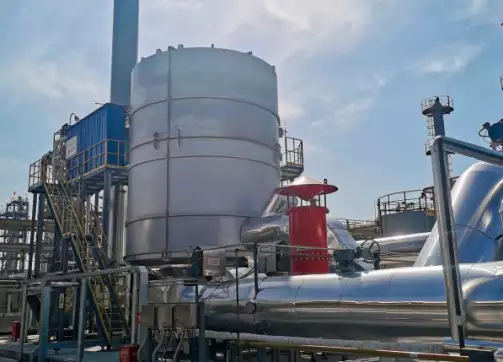How to train staff on using an RTO for air pollution control?
Pendahuluan
With the increasing awareness of the harmful effects of air pollution, many industries are now adopting Regenerative Thermal Oxidizers (RTOs) as a solution for air pollution control. However, the effective use of RTOs is highly dependent on the training of staff members. Therefore, it is imperative to train staff on the proper use of RTOs for air pollution control.
The Importance of RTO Training
RTO training is essential for various reasons, such as:
- Ensuring the safe operation of RTOs
- Preventing downtime and minimizing repair costs
- Optimizing the performance of RTOs
- Complying with industry regulations
Training staff on RTOs also ensures that they are equipped with the necessary skills to detect and rectify simple issues before they escalate into major problems.
The Basics of RTO Training
Before delving into the specifics of RTO training, staff members should be familiar with the basics of RTOs. This includes understanding the components of RTOs, how they operate, and their main functions. It is also crucial to train staff on the importance of RTO maintenance, including regular inspections, cleaning, and servicing.
Training on RTO Operations
Training staff on RTO operations involves educating them on the various operating parameters that affect the performance of RTOs. This includes training on how to monitor and control temperature, airflow, and pressure drop. Staff members should also be trained on how to identify and troubleshoot common operational issues, such as poor combustion efficiency and high carbon monoxide and nitrogen oxide levels.
RTO Maintenance Training
Proper RTO maintenance is crucial in ensuring optimal performance and minimizing downtime. Staff members should be trained on various aspects of RTO maintenance, such as:
- Regular inspections to identify potential issues before they escalate
- Cleaning of heat exchangers and other components to improve efficiency
- Regular replacement of consumable parts such as filter media and catalysts
Training should also cover the proper use of tools and equipment required for maintenance, including replacing filters and catalysts.
RTO Safety Training
RTOs are complex systems that can pose significant safety risks if not handled properly. Staff members should be trained on proper safety procedures, including wearing personal protective equipment (PPE) and following lock-out/tag-out procedures during maintenance. They should also be trained on emergency response procedures, including evacuation and fire suppression.
Kesimpulan
RTOs are effective solutions for air pollution control in industries. However, their effective use depends on staff training. Proper training ensures that staff members are equipped with the skills and knowledge necessary to operate RTOs safely and efficiently. Training should cover various aspects of RTO use, including operation, maintenance, and safety.
How to Train Staff on Using an RTO for Air Pollution Control?
Our company is a high-tech enterprise specializing in the comprehensive treatment of volatile organic compounds (VOCs) waste gas and carbon reduction and energy-saving technology. Our core technologies include thermal energy, combustion, sealing, and self-control, with the ability to simulate temperature fields and air flow fields, as well as test the properties of ceramic heat storage materials, molecular sieve adsorption materials, and high-temperature incineration oxidation of VOCs.
We have a technical research and development center and a waste gas carbon reduction engineering technology center in Xi’an and a production base of 30,000 square meters in Yangling, making us a leading manufacturer of RTO equipment and molecular sieve rotary equipment in the world. Our core technology team comes from the research institute of liquid rocket engine of aerospace (Aerospace Six Institute). Currently, we have more than 360 employees, including more than 60 R&D technology backbones, among which three are research professors, six are senior engineers, and 47 are thermodynamics Ph.Ds.
Our core products are RTO and molecular sieve rotary concentrators, combined with our own environmental protection and thermal system engineering technology expertise, which can provide customers with comprehensive industrial waste gas treatment and thermal energy utilization carbon reduction solutions for various working conditions.
Sertifikasi, Paten, dan Penghargaan
We have obtained various certifications and qualifications, including knowledge property management system certification, quality management system certification, environmental management system certification, construction industry enterprise qualification, high-tech enterprise, and patents for rotating valve type heat storage oxidation incinerator, rotary heat storage incinerator, and disc-shaped molecular sieve rotary equipment, etc.

How to Choose the Right RTO Equipment?
It is essential to choose the right RTO equipment for efficient air pollution control. Below are some steps to follow:
- Determine waste gas characteristics to select the most suitable RTO equipment
- Memahami peraturan setempat dan standar emisi
- Mengevaluasi efisiensi energi
- Pertimbangkan operasi dan pemeliharaan
- Melakukan analisis anggaran dan biaya
- Select the appropriate type of RTO equipment
- Consider environmental and safety concerns
- Conduct performance testing and verification
It is crucial to follow each of these steps carefully to ensure that you choose the appropriate RTO equipment for your needs.

RTO Air Pollution Control Service Process
Our RTO air pollution control service process includes:
- Konsultasi awal, inspeksi lokasi, dan analisis permintaan
- Solution design, simulation and evaluation, and solution review
- Produksi yang disesuaikan, kontrol kualitas, dan pengujian pabrik
- Layanan instalasi, komisioning, dan pelatihan di tempat
- Regular maintenance, technical support, and spare part supply
We provide a one-stop solution for RTO air pollution control, and our professional team can customize an RTO solution that fits your specific needs.
Penulis: Miya
